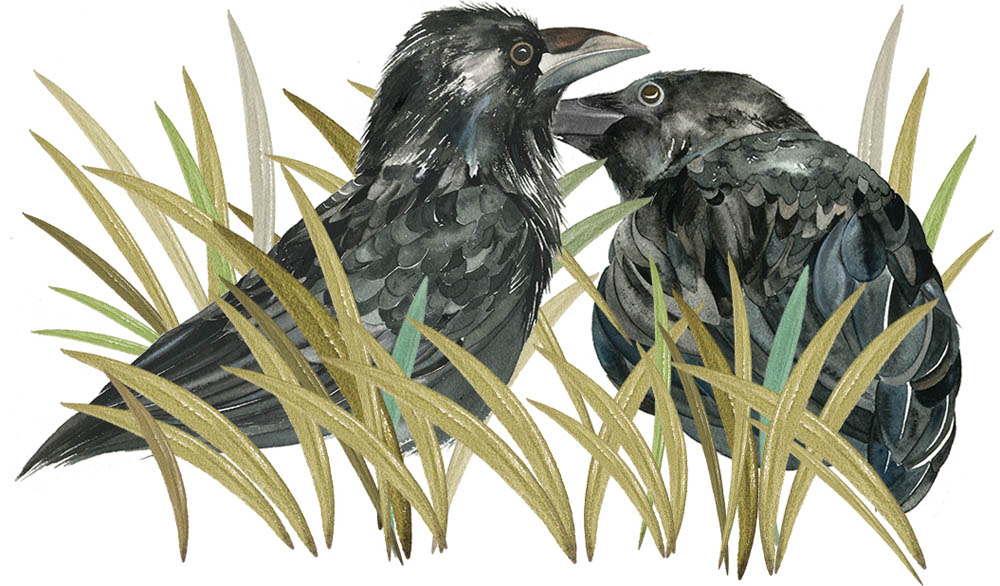Understand the Language of Crows
[Adapted from Into the Nest by Laura Erickson and Marie Read]
With close observation and a little patience, it is possible to understand something of the language that birds use to communicate. The sounds they make generally fall into one of several categories: song, companion calls, territorial aggression, juvenile begging, and alarm calls.
Crows are known for their cleverness and their complex social lives. They have more than 20 distinct calls, including many variants of the familiar caw, differing in quality, duration, and function. Body language also plays a role in communication. Below are just a few examples.

American crows live in extended families, defending a year-round territory in which they nest and forage. They communicate through a wide variety of calls and body postures.
- A cawing display, in which the calling crow partly spreads its wings, fans its tail, and swings its head down and up, may be employed during territorial defense.
- The assembly call is an intense and raucous series of long, drawn-out caws, summoning nearby crows to help drive off a predator (frequently a great horned owl). If you spend time observing crows, you may be able to learn how different alarm calls refer to different sources of danger.
- A bowing display is when one crow jerks its head up and down a few times and then bows, clacking its bill. Crows perform this display during courtship and other situations as well. Crows mate for life and stay bonded to their mate throughout the year. This may be why they have few courtship displays.